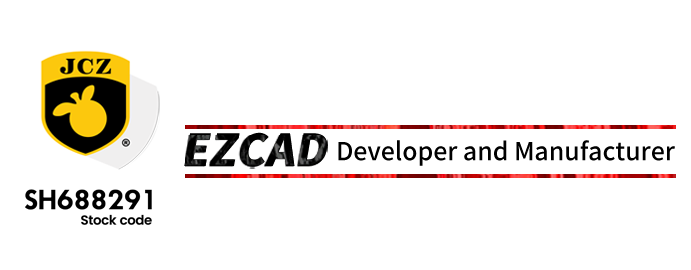Introduction
Laser trimming is a widely used technique for adjusting the resistance of resistors in electronic components. This process involves using a laser to precisely trim the material of a resistor, allowing it to meet specific resistance values. Whether for fine-tuning existing components or for mass production, resistor laser trimming equipment plays a crucial role in enhancing the performance of resistors and improving overall circuit reliability. In this article, we explore the various types of laser trimming machines and their applications in resistor manufacturing.
What is Resistor Laser Trimming?
Overview of Laser Trimming for Resistors
Laser trimming refers to the process of using a focused laser beam to remove or trim a portion of a resistor’s material, typically from a thin film or surface-mount resistor. This technique is incredibly precise, enabling manufacturers to fine-tune resistors to specific resistance values with high accuracy. Laser trimming is widely used in the electronics industry to ensure that components meet the required tolerance levels.
Laser Trimmer Technology
A laser trimmer uses focused light to heat and vaporize small portions of the resistor material. By carefully controlling the laser’s power, speed, and focus, manufacturers can remove just enough material to change the resistor’s value without affecting the component’s overall integrity. The result is a trimmed resistor that maintains high precision and quality, ideal for use in critical electronic circuits.
Types of Resistor Laser Trimming Equipment
1. Laser Trimming Machines
Laser trimming machines are specialized equipment designed to automate the resistor trimming process. These machines are equipped with high-powered lasers, precision controls, and often include a built-in system for real-time monitoring. The equipment is capable of trimming thousands of resistors with high repeatability, making it ideal for large-scale production.
2. Resistor Laser Trimming Systems
For high-precision applications, resistor laser trimming systems often incorporate advanced features such as computer-aided design (CAD) integration and automated alignment to improve trimming accuracy. These systems allow for precise control over laser parameters, ensuring that each resistor is calibrated to the correct resistance value. They can be used to adjust a variety of resistor types, from small surface-mount resistors to larger, more complex components.
3. Trimmed Resistor Applications
Trimmed resistors are used in a wide range of applications, including in automotive electronics, medical devices, telecommunications, and consumer electronics. In these industries, the need for precise, reliable resistors is critical. Laser resistor trimming ensures that components meet stringent performance requirements, improving the overall efficiency and reliability of electronic devices.
The Process of Laser Resistor Trimming
Step-by-Step Trimming Process
- Preparation: The resistor is loaded into the laser trimming machine, where its initial resistance value is measured.
- Laser Adjustment: The laser beam is directed onto the resistor’s surface, and a small section of material is removed. The laser’s parameters are adjusted to ensure precise material removal.
- Measurement and Calibration: After trimming, the resistor’s resistance is re-measured. If necessary, the trimming process is repeated to achieve the exact target resistance value.
- Final Testing: The trimmed resistor undergoes final testing to ensure it meets all specifications before being used in production or shipped to customers.
Laser Trimmer Advantages
Laser trimming provides numerous benefits over traditional trimming methods, including:
- High Precision: Laser trimming allows for extremely fine adjustments, ensuring that resistors meet tight tolerance levels.
- Non-Contact Process: The laser trimming process is non-contact, meaning there is no physical wear on the resistor, reducing the risk of damage.
- Speed and Efficiency: Laser trimmers can trim a large number of resistors quickly, making them ideal for high-volume production.
Benefits of Laser Trimming for Resistors
1. Enhanced Precision and Accuracy
One of the biggest advantages of laser resistor trimming is its ability to achieve highly precise resistance values. This is particularly important in applications where accuracy is critical, such as in high-performance electronics or aerospace components.
2. Reduced Material Waste
Because laser trimming removes only a tiny portion of the resistor material, it minimizes waste compared to other trimming methods. This makes it a more sustainable option, reducing the cost of raw materials and improving overall production efficiency.
3. Customization for Specific Applications
Laser trimming allows manufacturers to tailor resistors to specific requirements. Whether fine-tuning a resistor to match a particular design or adjusting resistance values to compensate for environmental factors, laser trimming provides the flexibility to meet the most demanding specifications.
4. Increased Reliability
Trimmed resistors are less prone to failure, as they have been carefully calibrated to ensure optimal performance. Laser trimming reduces the chances of resistance drift, a common issue in resistors that have not been properly calibrated.
Laser Trimming vs. Traditional Trimming Methods
Comparison with Mechanical Trimming
Mechanical trimming methods involve physically cutting or grinding resistors to achieve the desired resistance value. While effective, this method can be less precise than laser trimming and often leads to material loss. Additionally, mechanical trimming can introduce stress into the resistor, potentially affecting its performance.
Laser Trimming vs. Chemical Trimming
Chemical trimming, which uses etching techniques to adjust the resistance value, is another alternative. While effective, it involves the use of potentially hazardous chemicals and is not as precise as laser trimming. Laser trimming, being a cleaner and more precise process, is preferred for high-precision applications.
Conclusion
Resistor laser trimming is a highly effective technique for adjusting resistor values in electronic components. Laser trimming machines offer unparalleled precision, speed, and efficiency, making them the preferred choice for manufacturers in need of high-quality resistors. Whether used for large-scale production or fine-tuning individual components, laser trimmers provide a reliable solution for achieving optimal resistance values and ensuring the performance of electronic devices.
由用户投稿整理稿件发布,不代表本站观点及观点,进行交流学习之用,如涉及版权等问题,请随时联系我们(yangmei@bjjcz.com),我们将在第一时间给予处理。
Post time: Nov-11-2024







